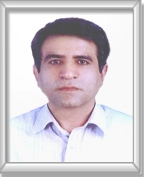Scientific Program

Mohammad Bagher Ghaemi
Department of Mathematics, Iran University of Science and Technology, Iran
Biography:
Mohammad Bagher Ghaemi belongs to Department of Mathematics, Iran University of Science and Technology, Iran. He completed his undergraduate course in Ferdowsi University of Mashhad from October 1983 to July 1987, graduating B.Sc. in Mathematics and Mathematical Education (first class). He completed his Master’s Course in Ferdowsi University of Mashhad from October 1987 to July 1990, graduating Ms.C. in Mathematics (first class). He did his Ms.C. thesis on "Automatic Continuity of Generalized Intertwining Operators". He pursued his Ph.D. Course in Glasgow University (UK) from March from March 1996 to October 2000, graduating Ph.D. in functional Analysis. He did his Ph.D. Thesis on "Spectral Theory of Linear Operators".
Abstract
- Applied Physics and Mathematics
- Atomic, Molecular, and Optical Physics
- Astrophysics
- Condensed Matter Physics
- Nuclear and Particle Physics
- Quantum Physics
- Thermodynamics and Statistical Physics
- Nano Physics and Nano Technology
- Algebra
- Analysis
- Geometry
- Statistics and Applied Probability
- Computational Mathematics and Scientific Computing

